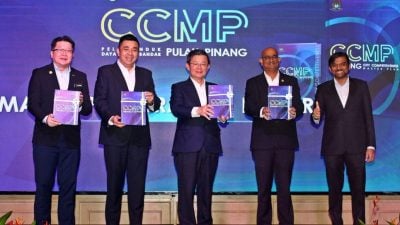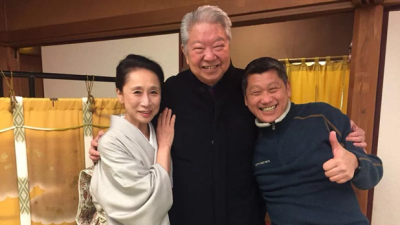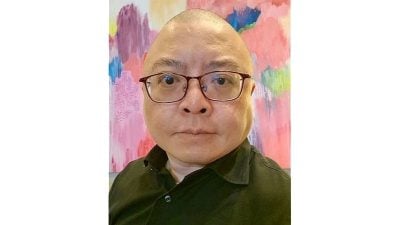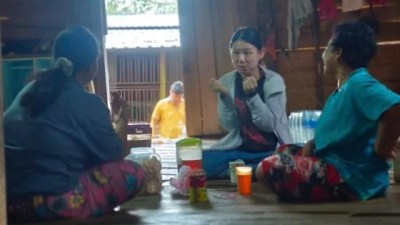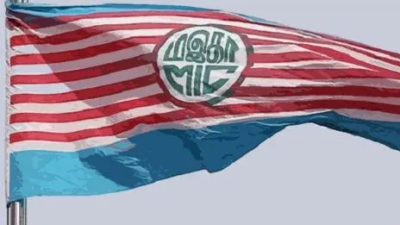Without the slightest doubt, Penangites always take pride in their identity wherever they are in this world. And this really makes me green with envy even though I have no clue why they love their hometown so much.
Whenever two strangers start talking in their familiar Penang accent Hokkien outside the island, the atmosphere will instantly change as if they have known each other for years! As if that’s not enough, even the Indians from Penang can speak in relatively fluent local accent Hokkien. Indeed, this common dialect has become a heartwarming bridge that bonds all the Penang lang together.
That’s not all! The people of Penang are also carrying with them a deep sense of mission from their 1826 Straits Settlements root. Earlier history could be traced back to the Hakka Chinese migrants (Teoh, Khoo and Beh) in 1745 and Captain Francis Light, the first Superintendent of Penang in 1786. And after that we had Cheong Fatt Tze, the richest man in Southeast Asia appointed Vice-Consul of China in Penang in 1893, and Dr Sun Yat-sen who made Penang his overseas revolutionary base in 1910.
Collectively, these great people’s lives and stories have made up almost 300 years of Penang’s history.
Right at this moment when foreign visitors are practically non-existent, it is a perfect time for us to have a close inspection of the many old stories lurking in the tiny alleys and lanes of Penang. BK Ooi, a Penang-born architect and antiquities expert, took 26 of us along three walking trails, each taking about two to three hours: 1. Colonial government related buildings, 2. Georgetown migration zone, and 3. Intangible heritage zone.
We were like travelling in a time machine back to the colonial days to gain a deeper understanding of the city’s rich history and culture, an interesting and meaningful journey indeed.
Pointing at the enormous 68-storey government office tower spanning across 11 hectares, architect Ooi Bok Kim said: Although this massive building is the most recognisable landmark of Penang, unfortunately hundreds of old shophouses more than 200 years old flanking four major roads here were bulldozed for its construction. The worst thing is, this tower is architecturally a complete mismatch of the surrounding old townscape. It’s both glaring and disheartening!
In late 1970s and early 1980s, many people in Penang took to the street to protest, creating a unique opportunity for the protection of the city’s heritage buildings. These heritage enthusiasts, architects and other building professionals teamed up with the local civic society and entrepreneurs to set up countless of associations for the preservation of Penang’s heritage buildings to safeguard every piece of tile and brick along every street of their beloved city, so that its priceless and profusely meaningful colonial legacies could be preserved for the future generations.
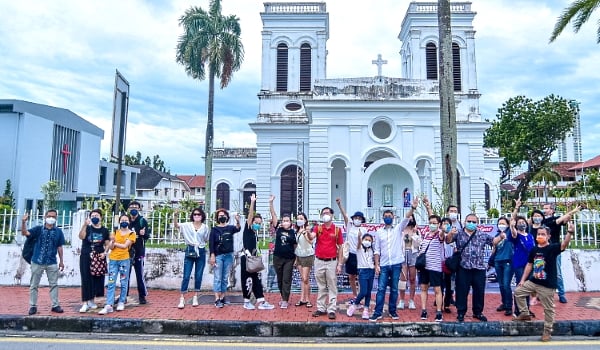
Thanks to their unrelenting efforts, some 5,000 structures erected around the colonial times, including residential houses, temples, churches, mosques, government buildings, schools, sculptures, road signs, clan jetties and old commercial signboards, have survived. Next, they had an additional goal, to get Penang listed as a UNESCO world cultural heritage site, which later became a reality in 2008.
Indeed, the people of Penang deserve to be proud of their city because of such an exceptional achievement of these wonderful guardians of the city’s rich cultural heritage.
And that’s not all, as we also got to experience and feel the intrinsic beauty of this city. The numerous dilapidated colonial mansions, villas, humble residential houses and temples have been restored to their former glory and given a new lease of life by local and oversea Penangites, including Chris Wong, Penang Baba tycoon returning from Australia, who rushed back from an earlier dinner to Seven Terraces, a late 19th century Nyonya heritage house painstakingly restored by him and other architects, in order to explain to us the significance of the revival of architectural art and cultural civilisation.
As a matter of fact, he has spent quite a fortune to acquire ancient relics and antiques that should have belonged to the Baba-Nyonya community of Penang in the first place, and brought them back to Penang. Additionally, he also preserved the original Kebaya Nyonya culinary and pastry recipes.
Actually there are still plenty of private museums in Penang including Pinang Peranakan Mansion and Colonial Penang Museum. That’s why I always say Penang lang are such a blessed lot!
For example early that morning, the 211-year-old King Street Thai Pak Koong Temple’s committee members were already there waiting for us in front of the temple, and it’s not hard to see the joy from their faces. Indeed, the UNESCO Asia Pacific heritage preservation award couldn’t have come at a better time.
From what we know, three other heritage buildings in Penang have also received this award, namely Cheong Fatt Tze Mansion (2000), Han Jiang Ancestral Temple (2006) and Suffolk House (2008). And many other old buildings are currently being rehabilitated. This explains why Penang has seen such a large congregation of architects and professional restorers.
Today, Penang is a lot more than just a gourmet’s paradise. Architect Ooi Bok Kim confirmed that all cooked food stalls in Penang are required by the law to hire only local cooks in a bid to preserve the tastes that Penang people have taken so much pride in.
That’s right! Even a small bowl of chendol, curry noodle or fried koay teow could send food lovers queuing up several blocks just to have a taste of Penang’s legendary street food which has been so well known globally that even CNN reported it.
What if there is no pyramid in Egypt? During this latest trip to Penang, we skipped those touristic places and instead met up with the unsung heroes of Penang who have made the island such a wonderful place.
(Lee San is Founder and Group Executive Chairman of Apple Vacations. He has travelled to 132 countries, six continents, and enjoys sharing his travel stories and insights. He has also authored five books.)
ADVERTISEMENT
ADVERTISEMENT








-3-400x225.jpg)

